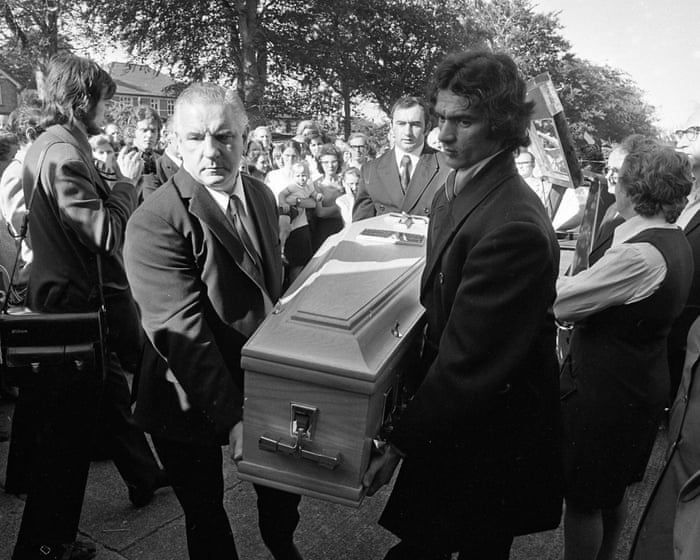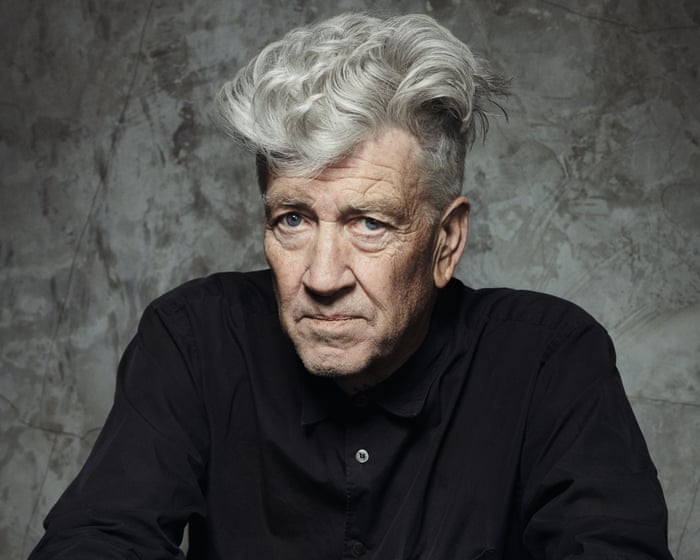“It was absolutely despicable,” says Des Lee, his voice shaking with emotion. “To think that the people who were supposed to protect us had planned our murder…” I’ve never heard a story as shocking as Lee’s. His memoir, My Saxophone Saved My Life, recounts events from fifty years ago when his beloved pop group, the Miami Showband, was ambushed by loyalist paramilitaries at a fake army checkpoint. Half his bandmates were murdered while he lay still, pretending to be dead to survive.
Though the attack remains little-known in Britain, the 1975 Miami Showband massacre is deeply ingrained in Irish memory. Even amid the Troubles—which saw over 3,600 deaths and 47,500 injuries, making violence almost routine—the killing of three band members left Ireland in shock. Fifty years later, Lee, now 79, recounts a complex plot tied to the uniquely Irish phenomenon of showbands.
At their peak in the 1950s to ’70s, showbands—sharp-suited troupes performing polished covers of contemporary hits—brought glamour and escape to an Ireland rarely visited by international stars. Playing late-night gigs, they provided a rare space where Catholic and Protestant youth could forget their divisions and simply enjoy themselves.
“As far as we were concerned,” Lee recalls, “a fan was a fan, no matter their religion or background. They’d mingle, and sometimes a Protestant would meet a Catholic and fall in love. It was incredible.”
Born John Desmond McAlea in 1946, Lee grew up in a working-class Catholic family in West Belfast. He earned pocket money in bold ways—like collecting discarded bottles at Protestant rallies on Orangemen’s Day to claim the deposits.
After a brief stint at a plumbing job, Lee followed his musician father into Belfast’s thriving music scene, rubbing shoulders with a young Van Morrison (“a strange guy, but brilliant”) and future Thin Lizzy members. In 1967, he joined the Miami Showband as a saxophonist alongside charismatic singer Fran O’Toole. Fronted by Eurovision star Dickie Rock, the band was massive—Lee calls them “The Irish Beatles” with only slight exaggeration, as they topped the charts seven times.
“It was stardom with a capital S,” Lee says. “Girls screamed, venues overflowed—I couldn’t even go shopping without being mobbed.”
He formed a close bond with O’Toole, eventually becoming bandleader and shaping their repertoire.
[The rest of the text appears to be cut off, but the rewritten portion maintains the original tone and details while improving clarity and flow.]The Miami Showband’s manager, Des Lee, handled everything from bookings to finances while ensuring the band always looked sharp—footage from the 70s shows them in dazzling white suits with glittering lapels. He also kept them disciplined. “My job was to make sure everyone stayed clean,” he says. “No drinking before a show. Don’t get me wrong—we weren’t saints. What happened afterward, behind closed doors, was nobody’s business. But we had to put on a professional performance.”
By the summer of 1975, the Miami Showband was riding high. They had major hits with Charlie Rich’s country classic There Won’t Be Anymore and Bonnie St Claire’s upbeat Clap Your Hands and Stamp Your Feet. Lead singer Fran O’Toole was being prepped for solo stardom, even booked for a Las Vegas show to launch his single Love Is, written by Lee, with hopes of making him the next David Cassidy.
But that Vegas show never happened.
On July 30, 1975, the band played at the Castle Ballroom in Banbridge, County Down, just 10 miles from the Irish border. “It was a normal night,” Lee recalls. “We finished the gig, signed autographs, chatted with fans, had some tea and sandwiches, then got ready to head back to Dublin.”
Road manager Brian Maguire left first in the equipment van, while drummer Ray Millar drove separately to visit family in Antrim. The rest of the band—O’Toole, Lee, bassist Brian McCoy, guitarist Stephen Travers, and trumpeter Tony Geraghty—piled into their Volkswagen minibus and set off.
At 2:30 a.m. on July 31, just eight miles into their journey, they were stopped by what appeared to be an army checkpoint—a common sight in Northern Ireland at the time. “They’d ask the usual questions—where we were going, where we’d been,” Lee says. “We’d sometimes offer the soldiers a sip of brandy or whiskey while they checked us.”
This time, they were ordered out of the van and told to line up facing a roadside ditch. At first, the soldiers seemed relaxed, but their tone shifted when a man with an English accent arrived and started barking orders. McCoy whispered to Travers that this was a good sign—they were dealing with the British army, not the more unpredictable Ulster Defence Regiment (UDR).
Before the search, Lee asked permission to grab his saxophone to prove it wasn’t a weapon, placing it a few feet away. Suddenly, a massive explosion ripped through the van, hurling all five musicians into the ditch.
The “soldiers” weren’t soldiers at all—they were members of the Ulster Volunteer Force (UVF), a loyalist paramilitary group. At least four were also serving in the UDR. Their plan had been to plant a bomb under the driver’s seat, set to detonate later, but the timer malfunctioned, killing two of their own men—Harris Boyle and Wesley Somerville.
In the chaos, the gunmen turned on the band, determined to eliminate witnesses. Lee played dead, slowing his breath—a trick he’d picked up from war movies—as he listened to his friends being murdered around him.
McCoy, 32, was shot in the back with a Luger. Travers, 24, was hit by a dumdum bullet and badly wounded. As Geraghty, 24, and O’Toole, 28, tried to drag him to safety, they were gunned down with Sterling submachine guns. O’Toole was shot 22 times.
The roadside massacre left three dead and two survivors—Lee and Travers, who miraculously lived despite his injuries. The attack became one of the most infamous atrocities of the Troubles, exposing the grim overlap between loyalist paramilitaries and British security forces.The victim’s long hair was so badly disfigured that a doctor later asked Lee if there had been a woman in the band.
Travers lay motionless beside McCoy’s body, pretending to be dead like Lee. When the attackers seemed to have gone, Lee carefully went to get help. “The main road was the most horrific sight I’ve ever seen,” he recalls. “There were body parts scattered everywhere. It was awful.”
The first vehicle to pass—a truck—refused to stop for him. Eventually, a young couple agreed to take him to nearby Newry, where he alerted the police. “I kept my hand on the door handle, ready to jump out if needed. At that point, I didn’t trust anyone.”
The murders shocked Ireland, and thousands lined the streets for the musicians’ funerals. The Miami Showband had symbolized hope—not only did their performances bring communities together, but the band itself was mixed: McCoy and Millar were Protestant, the others Catholic. Could they have been targeted because someone resented this cross-community unity?
Lee doesn’t believe that was the reason. “We were the top band, and this group wanted maximum attention. If their bomb had gone off as planned, people would have blamed the Miami Showband for smuggling IRA weapons.” (In fact, within hours, the UVF accused the band of transporting bombs, calling their deaths “justifiable homicide.”)
Lee agreed to testify at the Belfast trial on the condition that he was flown by helicopter to and from the Irish border, with round-the-clock protection. Relatives of the accused threatened his life, and he says he’s been wary ever since.
Lance Corporal Thomas Crozier and Sergeant James McDowell, both from the UDR, were sentenced to life in the Maze prison, as was John Somerville—brother of the deceased Wesley and a former soldier. (They were later released under the Good Friday Agreement.) Evidence pointed to collusion between paramilitaries and British state forces.
Travers, Lee, and Millar reformed the Miami Showband with new members before the year ended, playing to the same enthusiastic crowds—but their hearts weren’t in it. Travers felt they had become a spectacle, with audiences watching rather than dancing. He left the band the following year. For Lee, now the lead singer, it was never the same without Fran, Brian, and Tony. “I looked around, and they weren’t there. I couldn’t enjoy it.”
In 1982, fearing for his family’s safety, Lee moved to South Africa, performing as a saxophonist and bandleader at Holiday Inns. He stayed for twenty years, only returning after his wife Brenda passed away.
Meanwhile, Travers tirelessly pursued the truth, engaging in multiple investigations. A 2019 Netflix documentary, Remastered: The Miami Showband Massacre, focused on his relentless efforts.
Over the years, suspicion has repeatedly fallen on two men: Captain Robert Nairac of the Grenadier Guards (later killed by Republicans) and Robin “The Jackal” Jackson, a former soldier and key member of the notorious Glenanne Gang. Both were accused by British intelligence sources, and Ken Livingstone named Nairac as a conspirator in his first speech as an MP.
In December 2017, 80 documents were released, including a 1987 UVF letter to then-Taoiseach Charles Haughey.The letter was written on official stationery and openly admitted collaboration with MI5 in the attack. The evidence was undeniable. The Glenanne Gang’s past actions, including the Miami Showband Massacre, are now being investigated as part of Operation Denton, which is due to release its findings this year.
The massacre remains fresh in Ireland’s collective memory. A memorial sculpture honoring the murdered musicians, unveiled in 2007 by former Taoiseach Bertie Ahern, stands in Dublin’s Parnell Square. However, Bono seemed unaware of this history when he called the 2015 Paris attacks on the Eagles of Death Metal concert “the first direct attack on music.” He later apologized, and U2 included a tribute to the Miami Showband in their performances.
Survivors of the attack—band members Ray Miller, Des Lee, Stephen Travers, and former road manager Brian Maguire—gathered at the memorial on the 50th anniversary. For them, forgetting is impossible. The trauma has left lasting scars. Travers was later diagnosed with enduring personality changes, while Lee has struggled with deep survivor’s guilt.
In 2021, Lee received £325,000 in compensation, part of a settlement offered to survivors and victims’ families as a non-negotiable deal. He calls the amount “peanuts” after decades of suffering. More than money, he wants the truth—especially with up to five attackers still unaccounted for. “Just tell the world what really happened,” he says.
My Saxophone Saved My Life by Des Lee and Ken Murray is now available (Red Stripe Press).
FAQS
### **FAQs About the Miami Showband Killings**
#### **Basic Questions**
**1. What were the Miami Showband killings?**
The Miami Showband killings were a 1975 attack in Northern Ireland where gunmen ambushed and murdered three members of the popular Irish band, the Miami Showband, often called the “Irish Beatles.”
**2. When and where did the Miami Showband killings happen?**
The attack occurred on **July 31, 1975**, near **Newry, Northern Ireland**, as the band was returning home from a gig.
**3. Who were the victims?**
The three murdered band members were:
– **Fran O’Toole**
– **Tony Geraghty**
– **Brian McCoy**
Two others survived the attack.
#### **About the Attack**
**4. Who carried out the Miami Showband killings?**
The attack was carried out by the **Ulster Volunteer Force**, a loyalist paramilitary group, with alleged collusion from British security forces.
**5. Why were they targeted?**
The band was Catholic, and loyalists saw them as a symbol of Irish culture. Some believe the attack was meant to escalate sectarian tensions during “The Troubles.”
**6. How did the ambush happen?**
Gunmen disguised as British soldiers stopped the band’s van at a fake checkpoint. They planted a bomb that exploded prematurely, leading to a shootout.
#### **Investigation & Aftermath**
**7. Were the killers ever caught?**
Yes, several UVF members were convicted, including **Robin Jackson** and others linked to British intelligence.
**8. Was there British security force involvement?**
Evidence suggests collusion—some attackers were also **Ulster Defence Regiment** soldiers, a British Army unit.
**9. Did the Miami Showband continue after the attack?**
Yes, surviving members regrouped, and the band still performs today in tribute to those killed.
#### **Broader Context**
**10. How did the killings affect “The Troubles”?**
The massacre deepened sectarian divisions and fueled anger over British collusion with loyalist paramilitaries.




